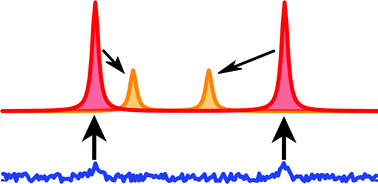Nuclear Magnetic Resonance (NMR) is an important spectroscopic tool for the identification and structural characterization of molecules in chemistry and biochemistry. The most significant limitation of NMR compared to other spectroscopies is its relatively low sensitivity, which thus often requires long measurement times or large amounts of sample. A way of increasing sensitivity of single scan NMR spectra by several orders of magnitude is through hyperpolarization of nuclear spins. Dynamic nuclear polarization allows hyperpolarization of most spins in small molecules encountered in chemistry and biochemistry. NMR spectra of small amounts of samples from natural source, or from chemical synthesis can readily be acquired. Perhaps more interestingly, the availability of the entire hyperpolarized NMR signal in one single scan allows the measurement of transient processes in real time, if applied together with a stopped-flow technique. Through observation of chemical shift, different reactant and product species can be distinguished, and kinetics and mechanisms, for example in enzyme catalyzed reactions, can be elucidated. Real-time hyperpolarization-enhanced NMR is uniquely amenable to correlating atomic positions not only through space, but also over time between reactant and product species. Such correlations carry mechanistic information about a reaction, and can prove reaction pathways. Applications of this technique are emerging in different areas of chemistry concerned with rapid reactions, including not only enzymatic processes, but also chemical catalysis and protein folding.
